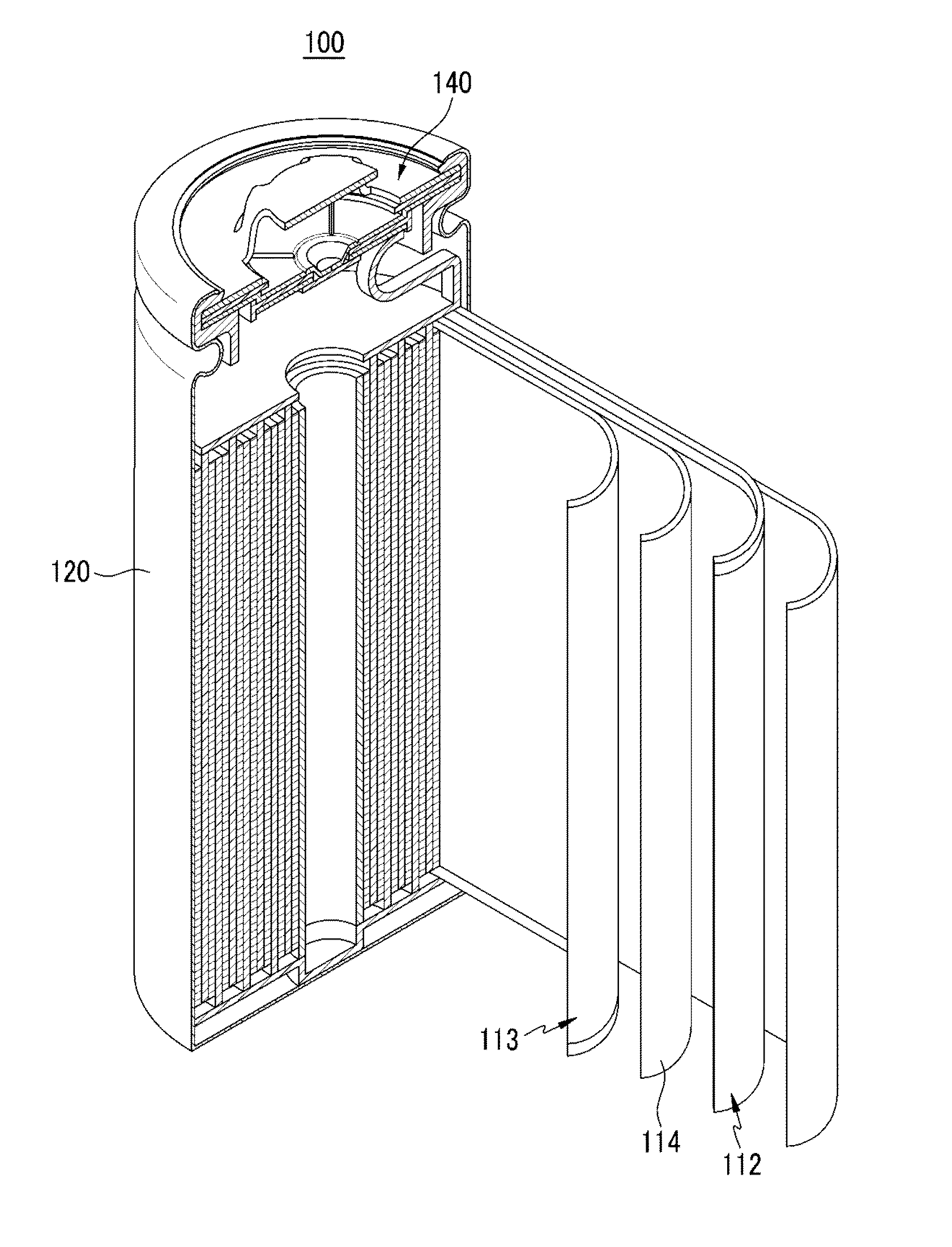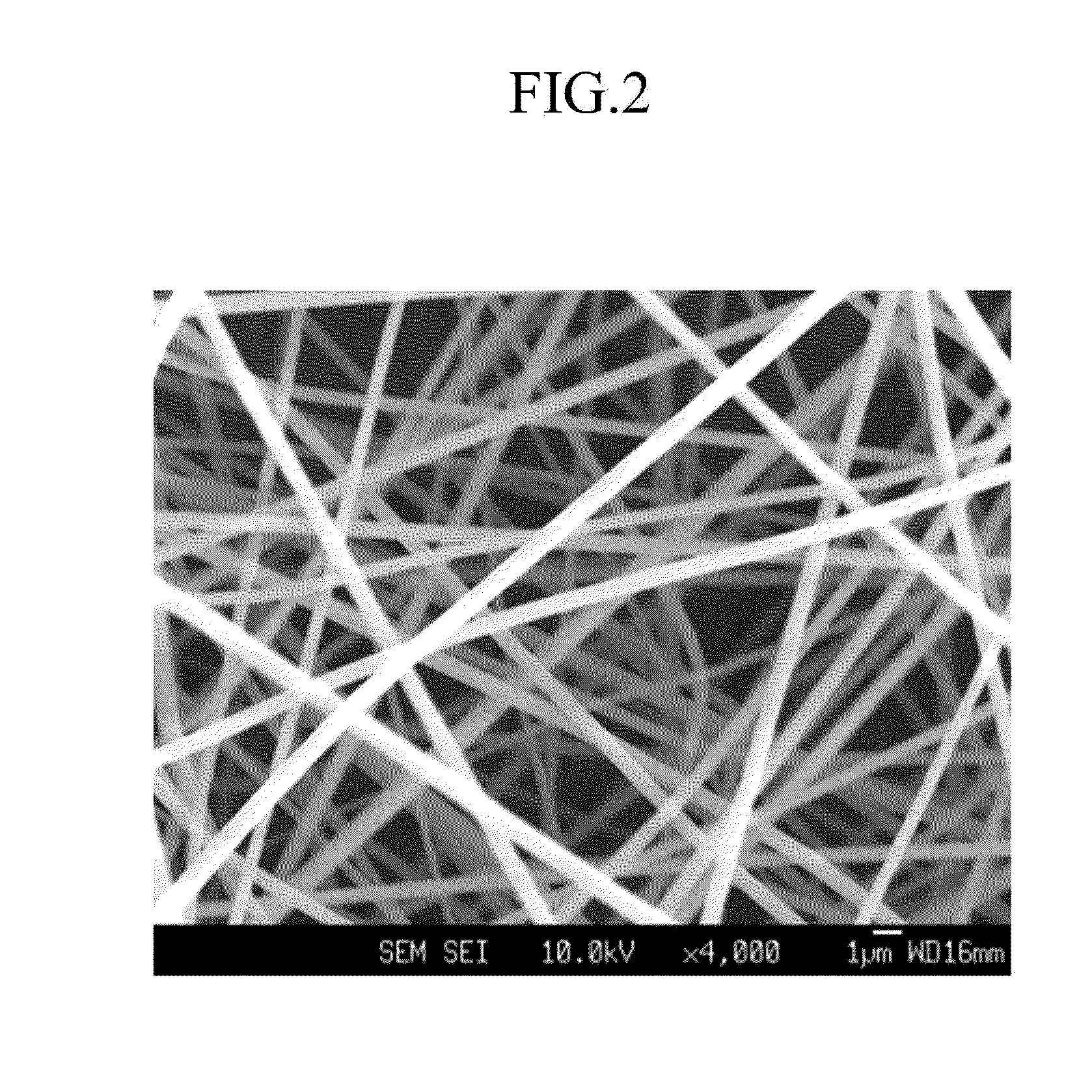Separator for lithium secondary battery and method for manufacturing same
a lithium secondary battery and separator technology, applied in the field of separators for rechargeable lithium batteries, to achieve the effects of improving cycle life characteristics, excellent thermal stability and wettability, and high temperature cycle life characteristics
- Summary
- Abstract
- Description
- Claims
- Application Information
AI Technical Summary
Benefits of technology
Problems solved by technology
Method used
Image
Examples
example 1
Fabrication of Separator for Rechargeable Lithium Battery Cell
[0258]A separator for a rechargeable lithium battery cell was fabricated to include a polymer including polybenzoxazole including a repeating unit represented by the following Chemical Formula 51 from polyhydroxyimide as shown in the following Reaction Scheme 1.
[0259](1) Preparation of Polyhydroxyimide
[0260]3.66 g (10 mmol) of 2,2-bis(3-amino-4-hydroxyphenyl)hexafluoropropane and 4.44 g (10 mmol) of 4,4′-(hexafluoroisopropylidene)diphthalic anhydride were added to 32.4 g of N-methylpyrrolidone (NMP), and the mixture was fervently agitated for 4 hours. Next, 32 ml of xylene as an azeotropic mixture was added to the agitated mixture, and the resulting mixture was solution-thermally imidized at 180° C. for 12 hours to remove water and the xylene therein, preparing polyhydroxyimide.
[0261](2) Fabrication of Separator for Rechargeable Lithium Battery Cell
[0262]A composition for forming a separator for a rechargeable lithium bat...
example 2
Fabrication of Separator for Rechargeable Lithium Battery Cell
[0287]A separator for a rechargeable lithium battery cell including polybenzoxazole including a repeating unit represented by the above Chemical Formula 51 was fabricated according to the same method as Example 1, except for heat-treating a non-woven fabric at 450° C. for 3 hours.
[0288]The separator for a rechargeable lithium battery cell had porosity of 89 volume %. In addition, the separator for a rechargeable lithium battery had a thickness of 105 μm. Furthermore, the separator had a thermal rearrangement rate of 100 mol %.
[0289]As a result of FT-IR analysis, the separator had polybenzoxazole characteristic bands of 1553 cm−1, 1480 cm−1(C═N), and 1058 cm−1(C—O), which were not found in polyhydroxyimide. In addition, the prepared polymer had a fractional free volume of 0.218 and interplanar spacing of 578.7 pm.
[0290]Furthermore, the separator had a full width at half maximum (FWHM) of 27.1 pm measured by using positron ...
example 3
Fabrication of Separator for Rechargeable Lithium Battery Cell
[0291]A separator for a rechargeable lithium battery cell including polybenzoxazole including a repeating unit represented by the above Chemical Formula 51 was fabricated according to the same method as Example 1, except for heat-treating a non-woven fabric at 400° C. for 3 hours.
[0292]The separator for a rechargeable lithium battery cell had porosity of 85 volume %, a thickness of 30 μm, and a thermal rearrangement rate of 69 mol %.
[0293]As a result of FT-IR analysis, the separator had polybenzoxazole characteristic bands of 1553 cm−1, 1480 cm−1(C═N), and 1058 cm−1(C—O), which were not found in polyhydroxyimide. In addition, the prepared polymer had a fractional free volume of 0.204 and interplanar spacing of 567.6 pm.
[0294]Furthermore, the separator had a full width at half maximum (FWHM) of 21.1 pm measured using positron annihilation lifetime spectroscopy (PALS).
PUM
| Property | Measurement | Unit |
|---|---|---|
| dielectric constant | aaaaa | aaaaa |
| viscosity | aaaaa | aaaaa |
| wt % | aaaaa | aaaaa |
Abstract
Description
Claims
Application Information
 Login to view more
Login to view more - R&D Engineer
- R&D Manager
- IP Professional
- Industry Leading Data Capabilities
- Powerful AI technology
- Patent DNA Extraction
Browse by: Latest US Patents, China's latest patents, Technical Efficacy Thesaurus, Application Domain, Technology Topic.
© 2024 PatSnap. All rights reserved.Legal|Privacy policy|Modern Slavery Act Transparency Statement|Sitemap



